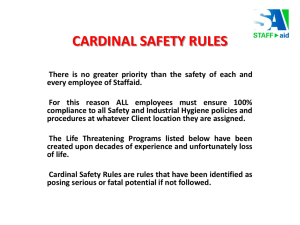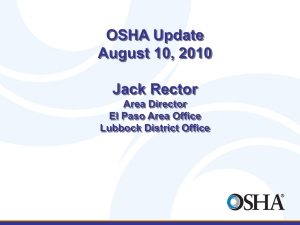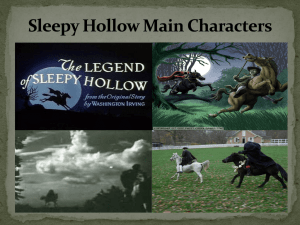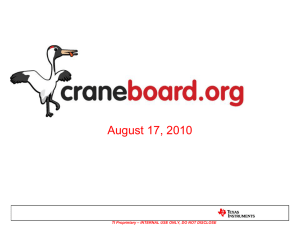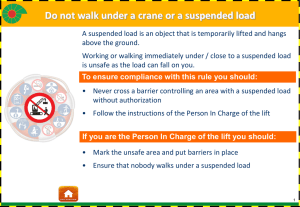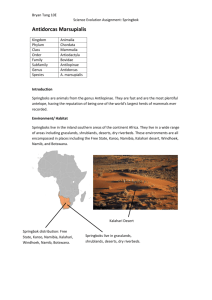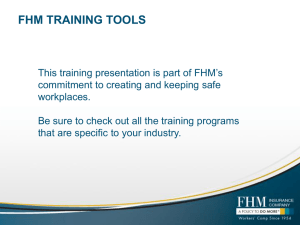National Symbols - This area is password protected
advertisement
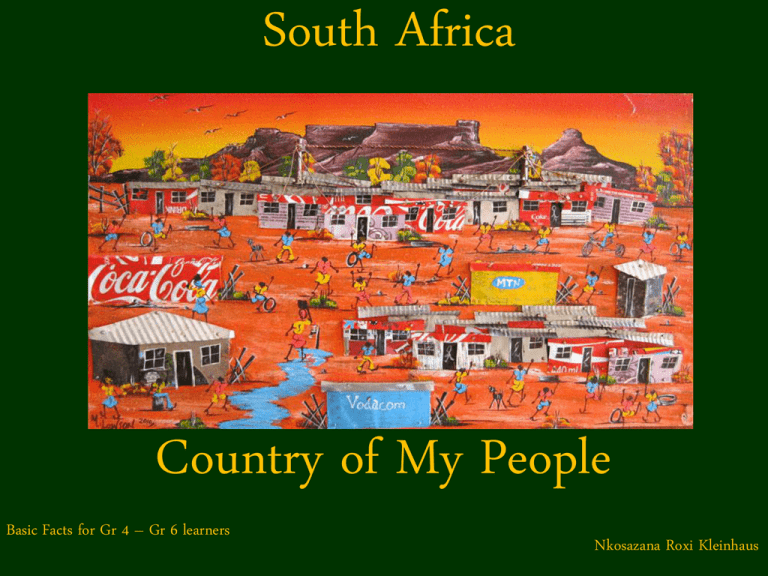
South Africa Country of My People Basic Facts for Gr 4 – Gr 6 learners Nkosazana Roxi Kleinhaus Learning about our National Identity • We are all familiar with our National Symbols - the National Coat of Arms, the National Anthem, and the National Flag. We see them all around us every day. • But how much do we really know about their history, their symbolism, and the important values they promote and that we all share as South Africans? Proudly South African A person’s national identity comes from their sense of belonging to a country, being proud of its history, cultures, languages, landscapes and traditions. This is Who We Are… The Republic of South Africa, as the name already indicates, is located in the very south of the African continent. It is bordered by the Indian Ocean in the east and the Atlantic Ocean in the west. The capital is Pretoria, which is in the north of the country. Around 50 million people live in South Africa. South Africa is not only known for its diversity of cultures, it is also home to hundreds of different types of mammals, birds and reptiles, such as zebras, elephants, crocodiles and even penguins. We are especially known for the Big Five. National Bird - Blue Crane Blue Crane – Fun Facts • There are lots of fun facts about Blue Cranes. Did you know that? • The Blue Crane, Anthropoides paradiseus, is a tall, ground-dwelling bird that gets its name from its blue-gray feathers. It is a member of the Gruidae family and one of fifteen crane species. • Blue Crane, Stanley Crane and Paradise Crane are three names for the same bird. The Xhosa word for Blue Crane is indwe. The Zulu word is iNdwa. • Blue Cranes are easily identified by their blue-gray color and white, feathered head. They have a short bill and two black legs. Blue Cranes have a large head, long, thin neck and long, downward curving tail feathers. • The Blue Crane is one of the smallest species of crane. It stands just 4 feet (117 cm) tall and weighs only 5.1 kg. • Blue Cranes are gregarious omnivores meaning they are social birds that eat different kinds of food. They feed on insects and seeds and even eat small vertebrates. Blue Cranes live and feed in flocks of up to 40 birds. • The Blue Crane inhabits grasslands and uplands. It is found in just two places in the world, South Africa and Namibia. • Blue Cranes, like all other cranes, call together with their mate and dance when they court. • The Blue Crane is the national bird of South Africa. Videos • http://www.arkive.org/blue-crane/anthropoides-paradiseus/videos.html National Land Animal - Springbok A herd of springbok bounds across Sperrgebiet National Park, 5.4 million newly protected acres on Namibia'ssouthwest coast. Superbly adapted for the harsh desert environment, springbok have increased their number to some 160,000 since the 1980s—one of several species recovering from historic lows. The springbok is the national and sporting emblem of South Africa. • Springboks get their name from their jumping abilities. They can leap up to 5m and bounce up again when they hit the ground. • During the 1800s, Springboks made up some of the largest herds on earth. Some herds had as many as 10 million animals and were over 150km long. • These antelope are not as numerous as they were then. They have, however, been introduced into Game Parks • Continent: Africa • Springboks are strikingly marked antelopes that roam the plains of southern Africa and have many adaptations which enable a successful existence in this harsh environment. • During hot, rainy summers springbok graze on grasses and turn to browsing on shrubs in colder winters, and when water is scarce they seek out moisture-rich roots. • Habitat: This animal inhabits the open, treeless plains and semi-arid regions of Southern Africa. • Range: South Africa, Botswana's Kalahari, Namibia, and Southwestern Angola • Reproduction: Female springboks give birth to one young during the rainy season when resources are plentiful. • Life Span: Up to 10 years • Color: The medium brown of its back is separated from its white underside by a dark reddish brown horizontal band that runs from its foreleg to its hip. • Springboks have a fold of skin along their backside. When they become alarmed or excited, the fold will turn outward to show a crest of white hair. • It is extremely fast and can reach speeds of 60 mph. • Springboks are renowned for ‘pronking’, which comprises several consecutive stiff-legged jumps, up to two meters high. This is a common response to predators, but can also be clever way of taking in their surroundings. • the springbok is alarmed or excited it pronks (incredibly fast stiff-legged leap), leaping up in height and repeating the action 5 or 6 times in succession. (Almost like a horse bucking). • They are light footed and can reach a speed of just below 90km/h (56 mph). Despite their remarkable speed, they remain vulnerable to cheetahs or leopards. Videos http://www.youtube.com/watch?feature=player_detailpage&v=FZyjiEhtBLU http://www.youtube.com/watch?v=8Ba3UxqXiXU&feature=player_detailpage http://www.youtube.com/watch?v=lHjIYn0lBRM&feature=player_detailpage http://www.youtube.com/watch?feature=player_detailpage&v=ANGD5cE2WoQ National Marine Animal - Galjoen • The name of this fish, ‘Galjoen,’ comes from the Dutch word for a 16th century warship called a ‘galleon’. • Our National Fish got its name from these magnificent ships because it is famous for its strong, healthy, fighting spirit. • The Galjoen is found only along the South African coast. • It feeds near the shore in shallow water on red bait, mussels and barnacles. • It is often found in rough surf* and sometimes right next to the shore, and is well known to all fishermen. • Near rocks the colour of the Galjoen is almost completely black, while in sandy areas its colour is silver-bronze. • Galjoen makes for good eating if you have the patience and skill to catch it. Videos • http://www.youtube.com/watch?feature=player_detailpage&v=Auf28N9hK8A More background facts for teachers Springbok (Antidorcas marsupialis) Springbok feed on grass and leaves and are found in the dry parts of the Free State, Karoo and the North West, where they can survive for long periods without water. Our ancestors respected these animals as they provided them with meat to eat and skins to make clothes and drums. Springbok are well known for their graceful leaps into the air – as if they have springs under their hooves. They are symbolic of agility*, confidence* and endurance*, which is why our national rugby team chose to be called the Springboks. • Blue Crane (Anthropoides paradisea) There are cranes all over the world, BUT THE "LUE #Rane is found only in Southern Africa. This tall, dignified*bird loves open, dry grassland where it feeds mainly on insects and seeds. Unfortunately, THE "LUE #Rane also loves to eat wheat and maize, so farmers have seen them as pests*and have often killed them. And as towns and cities grow, they take up more and more land, reducing the amount of grassland available for these magnificent* birds. As a result THE "LUE #Rane is an endangered* species* THE "LUE #Rane has long been a symbol of bravery. WHEN A "LUE #Rane is threatened, it puffs up its head, performs an aggressive war dance, and hisses like a deadly cobra.THE "LUE #Rane is a favourite in stories of bravery told by the Xhosaspeaking people of the Eastern Cape, and it was a tradition to award "LUE #Rane (Indwe) feathers to outstanding warriors. These warriors were then called Izithwalandwe, and regarded as reliable*, outstanding and brave servants of the nation. The African National Congress adopted this tradition by awarding the Isithwalandwe to its outstanding leaders, such as Chief Albert Luthuli and Dr Yusuf Dadoo National Living Heritage Symbols In South Africa we are privileged* to have so many protected* areas* where we can admire Mother Nature’s awesome* beauty as it has been for thousands of years. To celebrate and to remind us of this natural wealth, that belongs to us all, South Africa has chosen these National Living Heritage Symbols. www.education.gov.za/LinkClick.aspx?fileticket=p6VZ6IkiOn8%3d&tabid=93&mid= 1129

